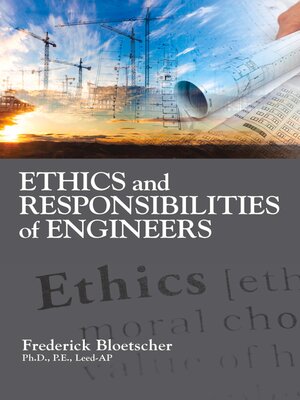
Sign up to save your library
With an OverDrive account, you can save your favorite libraries for at-a-glance information about availability. Find out more about OverDrive accounts.
Find this title in Libby, the library reading app by OverDrive.



Search for a digital library with this title
Title found at these libraries:
| Library Name | Distance |
|---|---|
| Loading... |
In today's increasingly competitive business world, engineers are continually faced with ethical questions that balance the needs of clients with those of society as a whole. With the dynamic nature of technological growth, the ethical challenges become more and more difficult to quantify and the potential for unintended and unwanted consequences increases exponentially. Individual profits and public service do not often align, hence the need for a code of ethics. Ethics and Responsibilities of Engineers is designed to help students and new practitioners understand from where ethics originate and how they have developed in the profession. It is written to help engineers understand how the coursework they take in school aligns with the public good. What separates this book from others is the focus on the historical development of ethics for the profession and the role played by our educational system, accreditation commissions, and licensing boards. The trust that the public has in their judgment to protect and serve society is what allows engineers to be held in high esteem.







